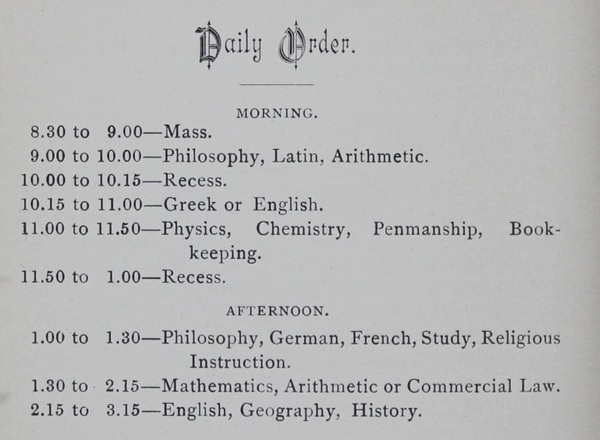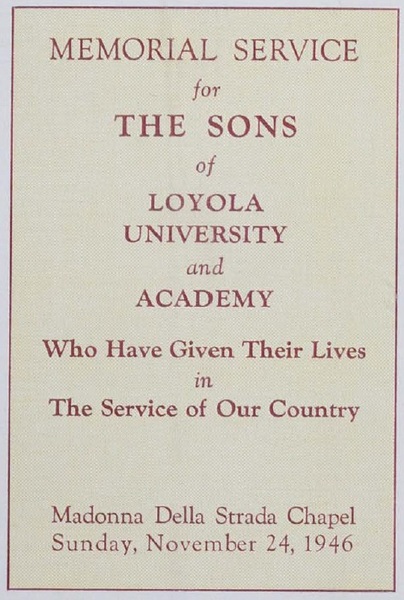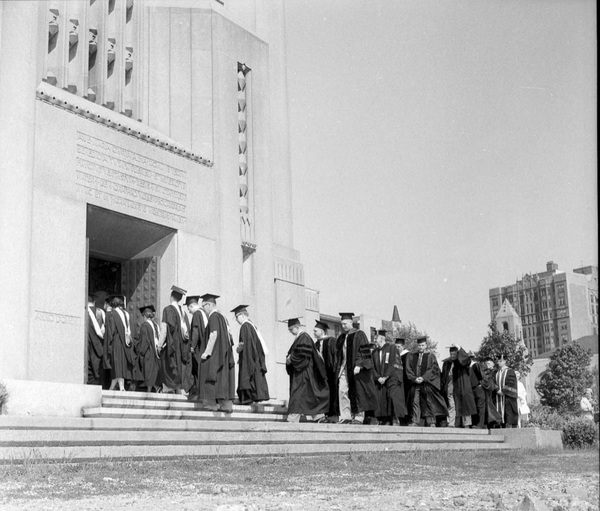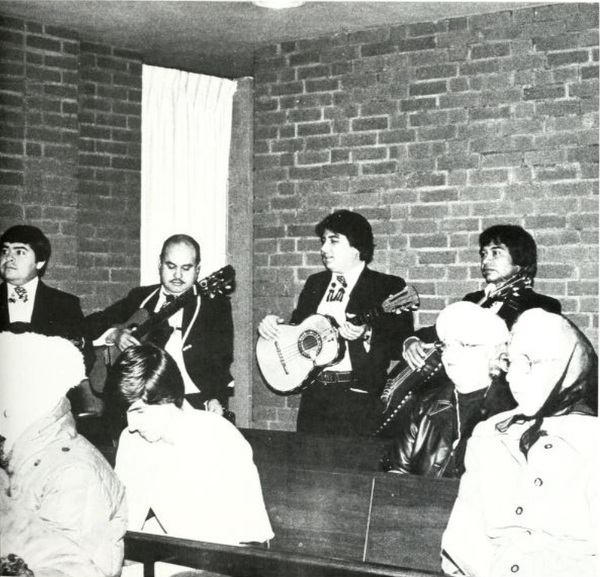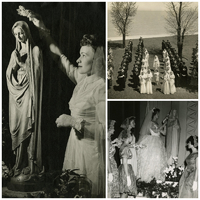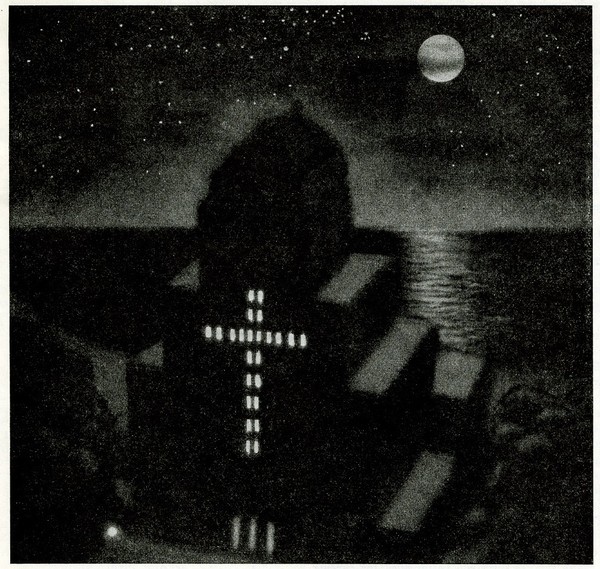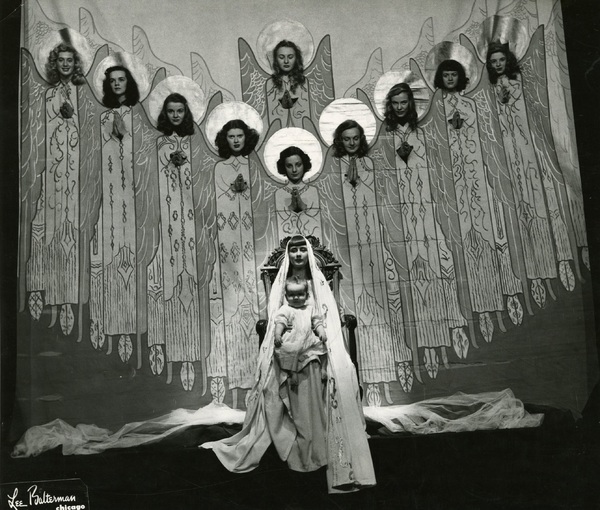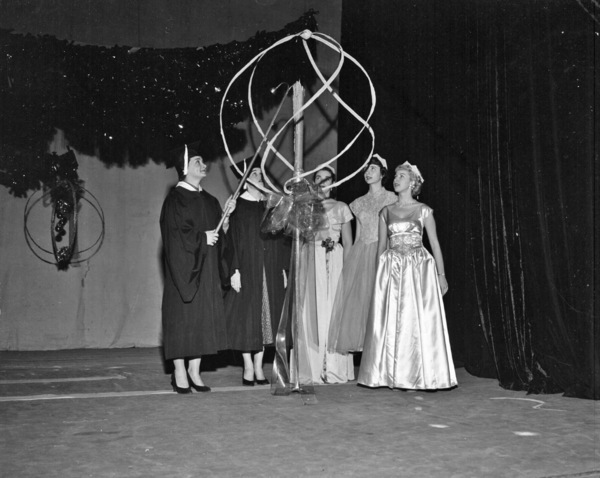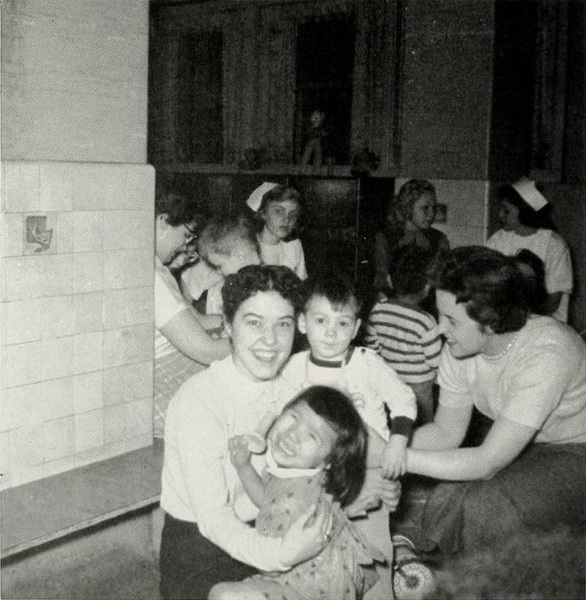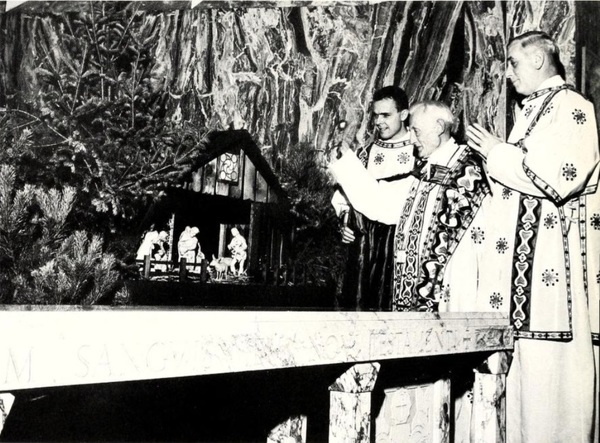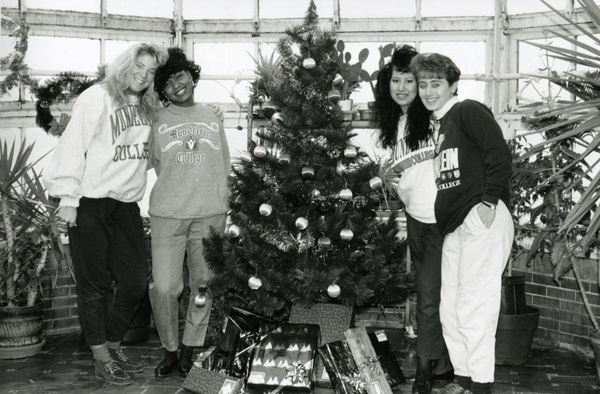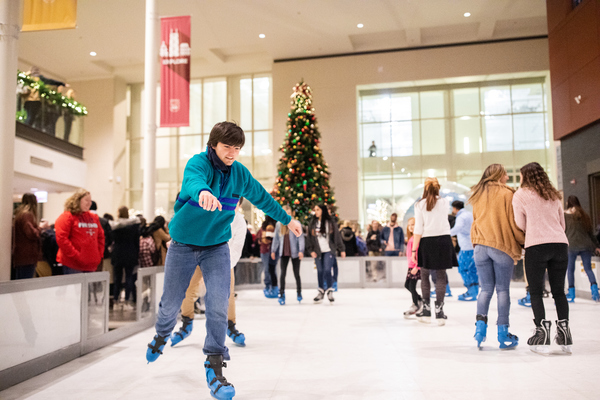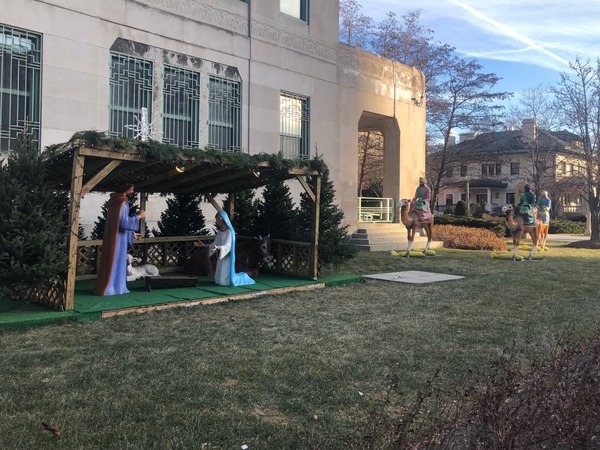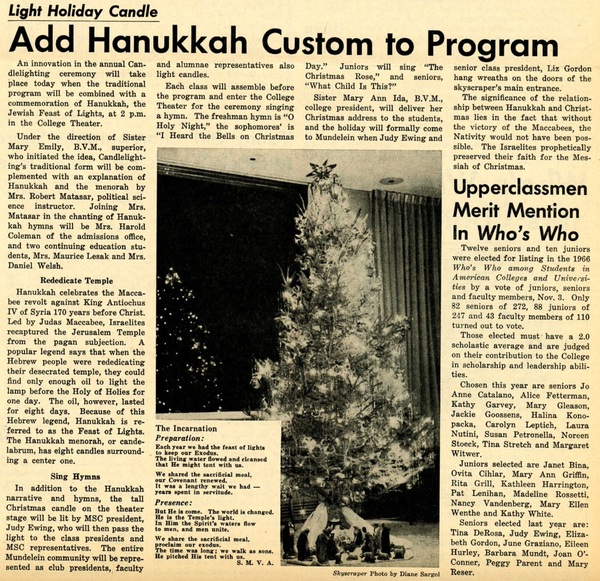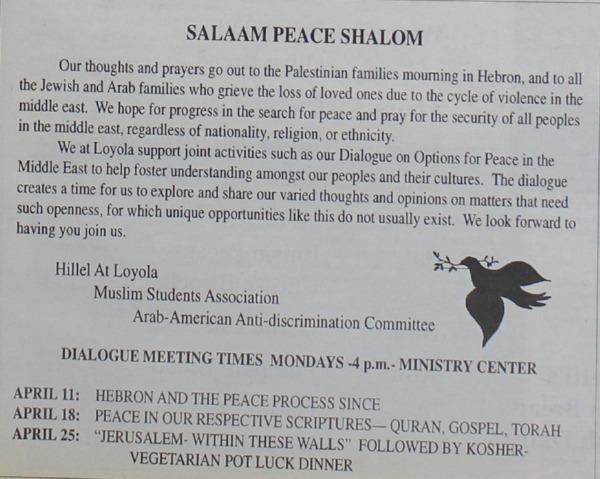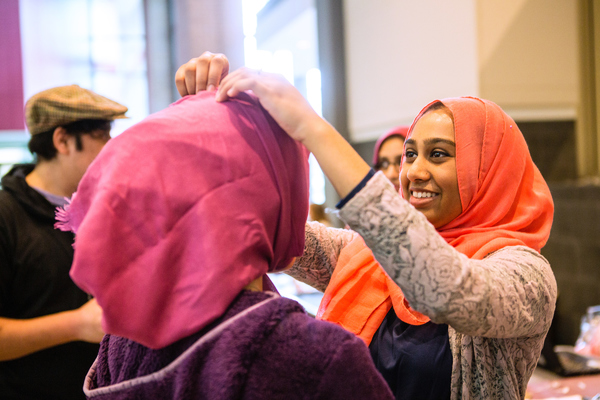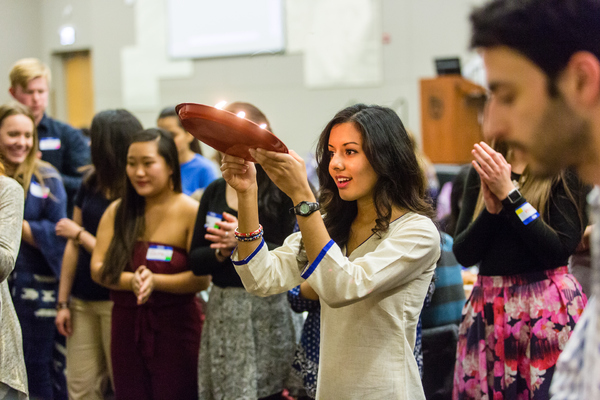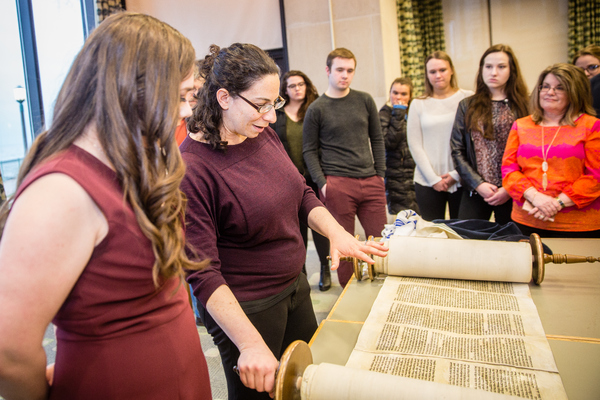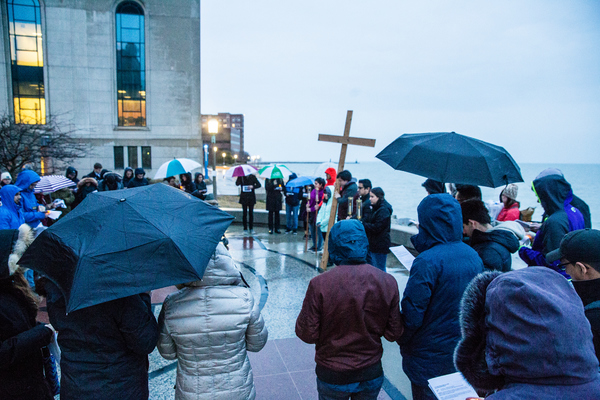Religion and Student Life
Remember why we go to Chicago viz. A.M.D.G. (Ad Majorem Dei Gloriam, “to the greater glory of God”) the good of Religion – the good of Souls.
From Loyola’s foundations as St. Ignatius College on Twelfth Street in 1870 to its transformation into Loyola University Chicago on the North Side in 1909, the Jesuit tradition has been the cornerstone for each development. In the college’s early years, the curriculum encompassed not only academic subjects such as Latin and Greek, but also included Christian doctrine and daily mass attendance. In later years, these requirements were no longer present but even today, weekly mass and communion are available to students. Students also regularly reflected on the social role of Catholic education and organizations in student publications.
Some of the first student organizations formed at Loyola and Mundelein were religious in nature, such as the Sodality of the Blessed Virgin Mary. Tracing their roots to Catholic colleges in Europe, one of the key activities of Sodalities was to generate interest in taking up collections for charities and missions. Mundelein students further formed committees within the Sodality for more specialized outreach to their community. In time to come, local chapters of religious honor societies such as Kappa Gamma Pi (for female Catholic graduates) and Alpha Zeta Gamma (for Jewish dental students) were also formed.
Traditions
Religion lent a special touch to both colleges’ traditions. Special masses were held for significant events such as the start of the school year (Mass of the Holy Ghost) and commencement (Baccalaureate Mass) as well as to express solidarity with other parts of the world, such as when Russians were unable to practice their religion under Stalinist rule. Periods of tragedy such as the World Wars were also remembered and reflected upon through memorial services.
Additionally, special events were held during the month of May, which is specially dedicated to the Blessed Virgin Mary in the church calendar. The Loyola Men's Sodality conducted daily services, while over at Mundelein, a May Crowning Ceremony was held. A Mundelein student would be elected by her peers as the May Queen and given the honor of crowning the statue of the Blessed Virgin Mary.
Christmas was likewise commemorated in unique ways by each school – a Blessing of the Crib ceremony would be held at Loyola, and the Candlelight and Carol Procession at Mundelein was an iconic sight on Sheridan Road. Individual departments and student organizations also came together to celebrate the holiday through get-togethers and outreach events. Other popular Christmas traditions included annual Christmas concerts, a cantata pageant, and of course, the Christmas tree. New traditions have also been formed in recent years, such as Loyola University Museum of Art’s annual Christmas exhibition and the moving nativity scene.
Outreach
Faith also provided a compass for both colleges in their engagement with the world at large. Discussions with other Catholic colleges in Chicago on pressing issues of the day and the creation of initiatives for furthering social and racial justice such as the National Catholic Interracial Conference and the Catholic Interracial Council were just some of the activities undertaken. Students sought to build bridges between Roman Catholicism and the various orthodox churches by hosting events such as the Chair of Unity observance, which enabled Roman Catholics to observe the Byzantine Rite of taking the Divine Liturgy.
Apart from such outward engagements, students also urged each other in student publications to look inward and draw solace from faith during times of upheaval and uncertainty. Yearbooks also provided an outlet for students to consider how Christian principles could be applied to the world, as in the 1932 Loyolan, which cited examples of individuals whose Christian values informed their work.
The Second Vatican Council and Its Impacts
The Second Vatican Council, also known as Vatican II, (1962-1965) marked a time of great excitement and change for Catholics and the world at large. Pope John XXIII's announcement of its creation was met with surprise globally. Not only was it the first ecumenical council ("an assembly of Roman Catholic religious leaders meant to settle doctrinal issues") in almost a century, people had also assumed that such councils were no longer required following the definition of papal infallibility in 1870. A key focus of Vatican II was reconciliation. This led to changes such as allowing for Catholics to pray with other Christian denominations, motivating friendships with other faiths, and enabling languages other than Latin to be used during Mass. Ecumenical forums during and after Vatican II enabled students to engage with the issues raised.
The first ecumenical forums at Loyola touched on the history of earlier Councils and their functions. In their second iteration, the forums focused on topics such as the role of women within the church, the revolution in modern catechectics, possible changes in canon law, and the effects of the Second Vatican Council on liturgy. After the conclusion of the council, Mundelein invited John Cogley, the religion editor of the New York Times who had covered three of the four Vatican II sessions, to talk about its impacts on the laity.
Following the decisions of the council, numerous changes occurred at both colleges. Women religious no longer had to don habits and longstanding traditions were revised or reinterpreted. For instance, the retreat and renewal requirement was no longer compulsory for Loyola students. Instead, while students were still encouraged to participate in retreats, they were also offered other opportunities for self-development. Some traditions were also newly adopted, such as the Concelebrated Mass, in which several priests said Mass and consecrated the same bread and wine together.
Another innovation to the Mass came about with the beginning of English Mass. Mundelein co-sponsored Chicago's first demonstration of an English Mass for the public in 1963, and later invited Reverend Donald Rooney, a chaplain who had become known for making liturgy personalized for modern Catholics, to celebrate English Mass at Mundelein in 1965.
Interfaith efforts also increased. Apart from the addition of new facilities such as an inter-faith religious education center to foster learning, administrators reached out beyond the campus to other faiths through efforts such as neighborhood dialogue sessions and annual Seder celebrations. Mundelein further played host to the 20th anniversary celebration of Nostra Aetate, the document issued by the Second Vatican Council which paved the way for bettering Catholic-Jewish relations.
The practices of other faiths were also interwoven into existing traditions, such as the Candlelighting ceremony. Sister Mary Emily, BVM, initiated the idea of combining the annual tradition with the commemoration of Hanukkah in 1965. Hanukkah hymns were sung alongside Christmas ones and an explanation of Hanukkah was also included.
Strength in Diversity
Rising tensions and violence in the Middle East in the 1990s prompted Loyola students to create platforms for interfaith and intercultural dialogue and awareness on campus. Student organizations presented talks on pressing topics such as “Misconceptions of Islam i.e Jihad” and collaborated with other programs at Loyola as well as external organizations on interdisciplinary issues such as “Women’s Role in Islam.”
Loyola's faith-based student organizations also collaborated with each other on initiatives aimed at fostering interfaith and intercultural understanding. In the wake of the 1994 Cave of the Patriarchs massacre at Hebron, Hillel at Loyola (est. 1987, an organization for the Jewish community at Loyola), Muslim Students Association and the Arab-American Anti-discrimination Committee issued a joint statement and call for dialogue to explore options for peace in the Middle East amongst people of different faiths and cultures. Today, students at Loyola continue to engage their peers on interfaith and intercultural issues through conversations and by beginning new interfaith celebrations of their own, such as the Hindu Shabbat Dinner.
Over time, individual students have begun initiatives to share their faith, whether by inviting the community to take part in religious practices such as wearing a hijab, or by sharing milestones in their personal faith journeys, such as conducting a mock bat mitzvah ceremony to share more about Jewish coming-of-age rituals. Retreats at Loyola also provide opportunities for students to disconnect from their normal routine and reflect on their faith. Regardless of the form interfaith engagement takes, Loyolans continue to celebrate the richness and strength of diversity.
*Mundelein College, founded and operated by the Sisters of Charity of the Blessed Virgin Mary (BVM), provided education to women from 1930 until 1991, when it affiliated with Loyola University Chicago.

